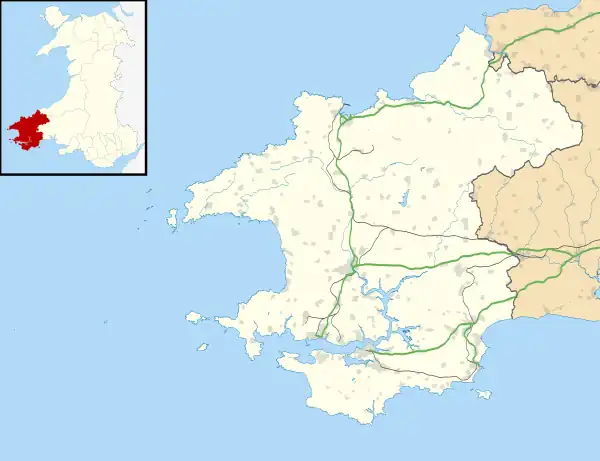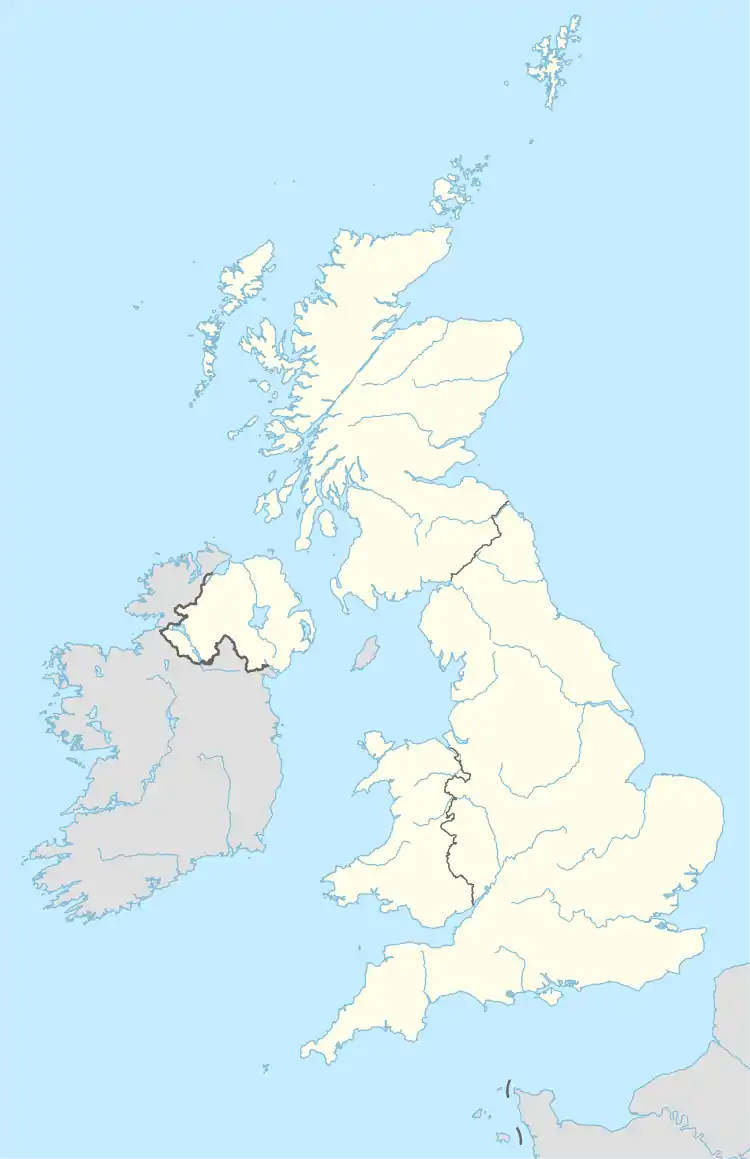| RNAS Lawrenny Ferry | |
|---|---|
| Lawrenny, Pembrokeshire in Wales | |
 Lawrenny Quay, the Fleet Air Arm flew seaplanes from this point during WW2 | |
 RNAS Lawrenny Ferry Shown within Pembrokeshire  RNAS Lawrenny Ferry RNAS Lawrenny Ferry (the United Kingdom) | |
| Coordinates | 51°43′5″N 004°52′40″W / 51.71806°N 4.87778°W |
| Type | Seaplane and Flying boat station |
| Site information | |
| Owner | Admiralty |
| Operator | Royal Navy |
| Controlled by | Fleet Air Arm |
| Site history | |
| Built | 1941 |
| In use | 1943 - 1946 |
| Battles/wars | European theatre of World War II |
Royal Naval Air Station Lawrenny Ferry(RNAS Lawrenny Ferry, also known as HMS Daedalus II) is a former Royal Naval Air Station located near Lawrenny, Pembrokeshire, Wales. It was operational between 1941 and 1946, being used by the Royal Navy, 1941 - 1943 and then put into a Care & Maintenance status.
The station was situated 3 miles (4.8 km) North East of Pembroke Dock, on the North side of the junction of the river Cresswell and river Carew, where they meet with the Eastern Cleddau, the northerly extension of Milford Haven.[1]
History
In early 1941 the Royal Navy put in place provisions to enable flying training for seaplanes at Lawrenny Ferry.[1] 764 Seaplane Training Squadron used the facilities, which included a Mains hangar, three concrete aircraft pens, an eighteen-foot (5.5 m) slipway and fuel storage, before moving permanently from RAF Pembroke Dock. Accommodation was two Nissen huts, however, officers and petty officers used Lawrenny Castle,[2] the Lawrenny Arms pub acted as the NCOs' mess and two steam yachts, named Carmela and Zaza, also provided accommodation for any squadron personnel. The base became a Royal Naval Air Station under the control of RNAS Lee-on-Solent (HMS Daedalus) and having an official role of Seaplane Flying Training Part II, including Seaplane conversion and gunnery courses. RNAS Lawrenny Ferry was commissioned as Daedalus II on the 1 February 1942.[1] With training discontinuing due to a reduced need, the base was reduced to Care and Maintenance in November 1943 on three months’ notice to re-commission and resume flying. The nissen huts and hangar were demolished in 1945,[2] however the base was still listed in the April 1946 Navy List.[1]
Royal Navy operations
Advance seaplane training squadron
764 Naval Air Squadron started using Lawrenny Ferry, while based at RAF Pembroke Dock, around May 1941 to train Fleet Air Arm pilots in the art of flying seaplanes. However, in response to Luftwaffe air raids on Pembroke Docks, in October 1941 the Air Section was withdrawn from there and 764 NAS moved permanently to RNAS Lawrenny Ferry. It arrived with eight Supermarine Walrus and one Fairey Swordfish floatplane, which was soon withdrawn, leaving the Walrus as the main aircraft operated. In July 1942, Vought OS2U Kingfisher aircraft arrived.[1] The need for Seaplane Training had diminished by the middle of 1943 and eventually 764 NAS disbanded at RNAS Lawrenny Ferry on 7 November 1943.[3]
Station commanders
- Note: The ranks shown are the ranks held at the time of holding the appointment of commanding officer, Royal Naval Air Station Lawrenny Ferry.[1]
Previous units
Flying and notable non-flying units previously based at Lawrenny Ferry:[4]
- 764 Naval Air Squadron (October 1941 - November 1943)
See also
References
Citations
- 1 2 Phillips 2012, p. 43.
- ↑ "Lawrenny Ferry". Airfields of Britain Conservation Trust. Retrieved 27 April 2023.
Bibliography
- Ballance, Theo (2016). The Squadrons and Units of the Fleet Air Arm. Air Britain Historians Limited. ISBN 978-0-85130-489-2.
- Phillips, Alan (2012). Welsh Military Airfields Through Time. Stroud, Gloucestershire UK: Amberley Publishing. ISBN 978-1-4456-0993-5.